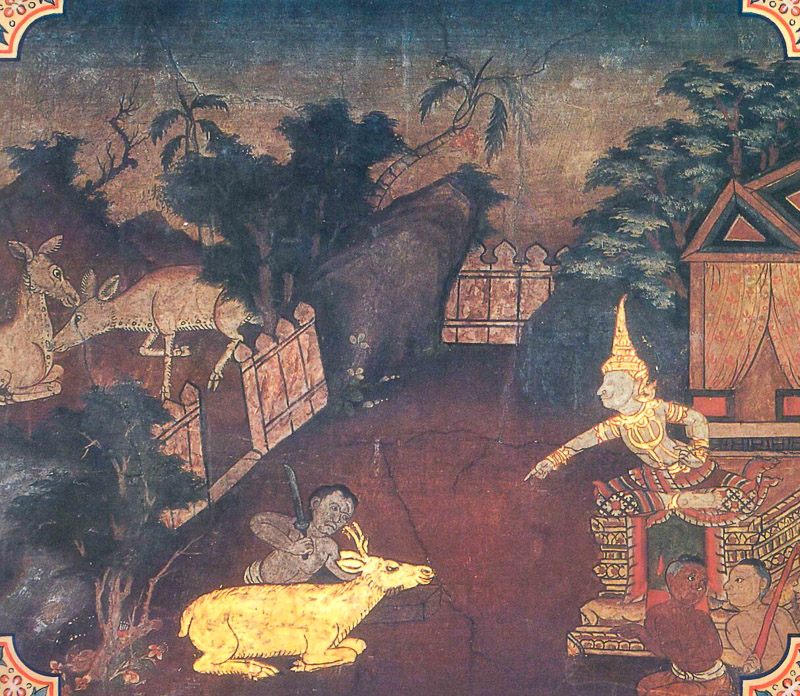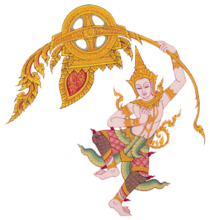
The Bodhisatta was once a deer. He was golden in hue and perfect in form and was the leader of a large herd. He was friends with another deer, Sakha, who had the same golden color and also led a large herd. The king enjoyed hunting, and every day he took his subjects to the forest to assist him. The people hated this disruption to their lives, so they encircled a vast stretch of forest and drove the Bodhisatta and Sakha’s herds into the king’s gated park. They told the king what they had done and asked him to eat these deer instead of taking them out to the forest. He agreed. And having seen the two beautiful golden deer, the king gave them immunity.
Some days the king came and shot the deer himself, but usually he sent his cook to do it. When either of the hunters came, the deer ran away and trembled in fear. It usually took two or three arrows piercing their bodies before they would finally die. Though he could not stop the hunts, the Bodhisatta wanted to stop the suffering. He suggested that each day one deer be chosen at random, alternating between the two herds, to go sacrifice itself by laying its neck on the chopping block. Sakha agreed to the plan.
One day the lot fell to a pregnant doe in Sakha’s herd. She begged him to let her wait until after her fawn was born. When Sakha rejected her request, she went to the Bodhisatta, who agreed that she should skip her turn. And when the time came, he went and lay his own head on the chopping block. The cook, knowing this deer had immunity from death, informed the king who rushed to his park to see what was happening.
The Bodhisatta explained the situation and the compassionate king, impressed by this display of love and charity, agreed to also spare the doe’s life. The Bodhisatta asked why only their lives, and soon he had convinced the king to forbid the killing of all animals great and small. The Bodhisatta preached to the king about righteousness and justice for a few days, then led his herd back to the forest, instructing them to never eat men’s crops. The doe gave birth to a fawn as beautiful as a lotus bud and ordered him to only associate with the Bodhisatta’s herd.
In the Lifetime of the Buddha
The daughter of a wealthy merchant believed from an early age that she was in her final existence before entering nirvana, so she wanted to become a disciple of the Buddha. But her parents said no because she was their only daughter. After she married, her caring husband saw just how much she respected dharma and encouraged her to ordain.
The woman took up residence under the tutelage of Devadatta, a disciple of the Buddha who later became his nemesis. Soon after, she discovered she was pregnant, and Devadatta, who lacked love and charity, ordered her expelled without even having an inquiry as to whether the pregnancy happened before or after she had become a disciple. But because she had made her vow to the Buddha, not Devadatta, the woman insisted on letting him hear her case. The Buddha had another female disciple examine the woman, and when it was announced that she had conceived her child before joining the sangha, she returned to her nunnery. King Pasenadi, a righteous ruler and devoted supporter of the Buddha, adopted her son, and he later became a disciple of the Buddha. Both he and his mother became arahants.
The doe and her fawn were earlier births of this disciple and her son, and the Buddha told this story to let his other disciples know he had saved this mother and son once before. Sakha and his followers were earlier births of Devadatta and his followers, and the king was an earlier birth of Ananda, one of the Buddha’s top disciples.
